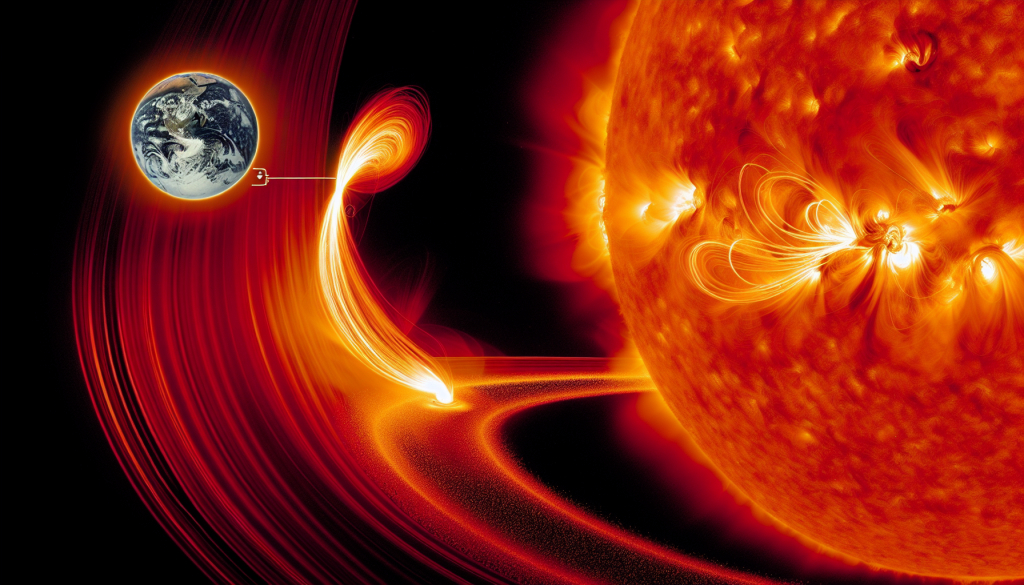Solar eruptions found to be over six times hotter than once believed

Image:
A solar flare observed at the Sun’s edge, with Earth shown for size comparison
Image credit: Created by Alexander Russell (University of St Andrews) using the SunPy Python library and data from NASA’s Solar Dynamics Observatory satellite, provided through NASA’s EPIC team
Scientists at the University of St Andrews have discovered that particles within solar flares may be more than six times hotter than previously believed. This finding also offers a possible solution to an astrophysics puzzle that has remained unresolved for the past 50 years.
Solar flares are powerful bursts of energy that erupt from the Sun’s outer atmosphere, releasing intense heat and radiation that can raise temperatures to above 10 million degrees. These flares boost the levels of X-rays and solar radiation that reach Earth, posing threats to satellites and astronauts and causing disturbances in the planet’s upper atmosphere.
A new study published in The Astrophysical Journal Letters focuses on how this energy heats solar plasma—a mix of ions and electrons—during a flare. Researchers now suggest that the ions alone could heat up to above 60 million degrees, significantly more than what was initially estimated.
Drawing on insights from various fields of space science, the research team led by Dr. Alexander Russell from the University’s School of Mathematics and Statistics, found that ions tend to absorb more heat than electrons during solar flare activity.
Dr. Russell explained: “We were intrigued by recent findings that show a phenomenon called magnetic reconnection heats ions much more—about 6.5 times more—than electrons. This effect has been observed near Earth, in the solar wind, and through simulations, but until now, hadn’t been linked to solar flare events.”
He added, “Traditionally, solar researchers assumed ions and electrons had equal temperatures. But when we applied current data to old models, we discovered that these temperature differences can persist for several minutes in vital flare regions. This opens up the possibility of considering ultra-hot ions in solar flares for the first time.”
“Furthermore,” Russell said, “this higher ion temperature correlates well with the broader-than-expected spectral lines observed during flares—potentially resolving a mystery in solar astrophysics that dates back nearly five decades.”
Since the 1970s, scientists have questioned why the spectral lines—bright bands appearing in X-ray and extreme ultraviolet readings—are wider than theoretical models predict. The leading theory blamed turbulence, but attempts to identify the exact cause have proven difficult. This new research suggests a fundamental shift in understanding: that ion temperatures may significantly contribute to the exaggerated line widths seen during solar flares.
Journal
The Astrophysical Journal Letters
DOI
10.3847/2041-8213/adf74a
Method of Research
Data and statistical analysis
Subject of Research
Not applicable
Article Title
Solar Flare Ion Temperatures
Article Publication Date
September 3, 2025

